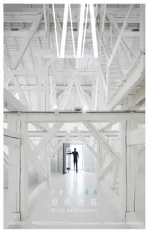LAPAS和DOM出版社立陶宛建筑图书集萃
2018-06-19尚晋TranslatedbySHANGJin
尚晋 译/Translated by SHANG Jin
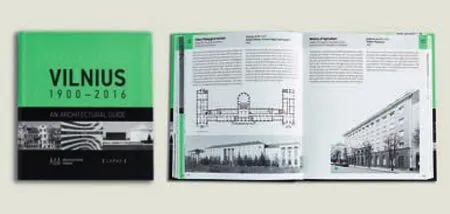
编辑/Editors: Marija Drėmaitė, Rūta Leitanaitė, Julija Reklaitė
撰文/Texts: Marija Drėmaitė, Rūta Leitanaitė, Nijolė Lukšionytė, Karolis Kučiauskas, Diana Kontrimaitė,Algimantas Mačiulis, Vaidas Petrulis, Julija Reklaitė,Jurgita Rimkevičienė, Indrė Ruseckaitė, Jūratė Tutlytė,Aida Štelbienė, Renata Vaičekonytė-Kepežinskienė
摄影/Photos: Audrius Ambrasas, Raimondas Urbakavičius, Norbert Tukaj and others
出版/Publish: LAPAS, www.lapasbooks.lt, 2016
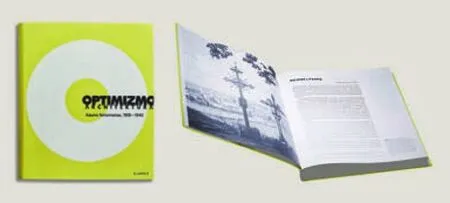
编辑/Editor: Marija Drėmaitė
撰文/Texts: Giedrė Jankevičiūtė, Marija Drėmaitė,Vaidas Petrulis, Vilma Akmenytė-Ruzgienė, Norbertas Černiauskas, Paulius Tautvydas Laurinaitis, Viltė Migonytė-Petrulienė
出版/Publish: LAPAS, www.lapasbooks.lt, 2018英文版将于2018年6月出版/English edition available in June, 2018.
《维尔纽斯1900-2016建筑掠影》
20世纪及21世纪初的维尔纽斯建筑,涵盖了从现代主义到高技派的各种风格,体现了该时期席卷这座城市的所有建筑潮流和政治变革。20世纪之初,雅致的中欧分离派风格依旧流行。随后,建筑走向1920-1930年代两次世界大战期间简约的现代主义,二战后又强推备受争议的苏联新古典主义。在1950年代中期“极权主义”建筑被正式废止后,战后现代主义兴起,尤其体现在为城市不断增长的人口而建的新居住区上。苏联时代末期,城市中心周围涌现出大量现代主义晚期公共建筑。1990年恢复独立后,经济与社会都随之一变,维尔纽斯经历了又一波城市化浪潮。私人住宅再度兴建,使城市几近饱和。在内里斯河右岸,一个壮观的钢和玻璃的城市中心拔地而起。□
Vilnius 1900-2016. An Architectural Guide
Vilnius' architecture of the 20th and early 21st centuries ranges from the Modern Style to High-Tech, and reflects all the architectural trends and
《乐观主义建筑:考纳斯现象,1918-1940》
本书不只是一座城市及其建筑的故事。它讲述的是希望与幻灭的永恒更迭,是创意工作与启发人的创作乐观主义,是概念与形式的转移,是地方性与全球性,是艺术与自由、战争与压迫。它讲述的是变幻的形式与概念及其与当代的关系。本书出自为纪念立陶宛恢复独立100周年举办的展览“乐观主义建筑:考纳斯现象,1918-1940”。
考纳斯的现代建筑体现出一战之后新独立(或恢复独立)的欧洲各国首都出现的政治、社会、经济和文化乐观主义。当考纳斯忽然在1919年成为立陶宛临时首都后,这座城市随之而来的变化无亚于一个奇迹。考纳斯的面貌焕然一新:不到20年,它的居民就使这座城市变为一个现代、优美的欧洲式首都。建筑在这个变化中发挥了尤为重要的作用,这就是为何连1940年立陶宛沦陷都没有夺去它的价值。第两次世界大战后的考纳斯现代主义建筑遗产成了丧失国家地位的象征和遗产的纪念,同时也是面向西方的象征之窗和给立陶宛建筑师的特征典范。今天,这个遗产是考纳斯特色的重要来源及其城市“场所精神”的表达。
这些内容在本书的编写中是不可或缺的。编辑希望在本书中为考纳斯两次世界大战期间向现代首都的转变写下浓墨重彩的一笔,并展现这座城市所面临的重重挑战和克服它们的种种努力。□
Architecture of Optimism: The Kaunas Phenomenon, 1918-1940
This book is more than just the story of one city and its architecture. It is about the perpetual birth and death of hope, about creative endeavour and inspiring productive optimism, about the migration of ideas and political shifts that swept across the city during this period. At the dawn of the 20th century, the elegant Central European Sezession style was still in vogue.Architecture later progressed to the stripped-down interwar Modernism of the 1920s and 1930s, and after the Second World War it ventured into the controversial Soviet-imposed Neoclassicism. After "totalitarian"architecture was officially discredited in the mid-1950s,postwar Modernism flourished, particularly in the new residential districts that were built to house the city's growing population. At the end of the Soviet period,Late Modernism saw a large number of public buildings appear around the city centre. With the reestablishment of independence in 1990, and with the consequent changes that took place in the economy and in society,Vilnius experienced yet another wave of urbanisation.Private houses were built again, filling the city to the limits, and a spectacular steel and glass city centre took shape on the right bank of the River Neris. □forms, about the local and the global, about art and freedom, war and oppression. It is about changing forms and ideas and their relationship with the present day. This book is part of an exhibition entitled The Architecture of Optimism: The Kaunas Phenomenon, 1918-1940 held to commemorate the one hundredth anniversary of the restoration of Lithuanian independence.
The modern architecture of Kaunas reflects the political, social, economic and cultural optimism that flourished in the capitals of newly declared/proclaimed (or re-established) European countries in the wake of World War I. After Kaunas suddenly became Lithuania's provisional capital in 1919, the city's subsequent transformation was nothing short of miraculous. Kaunas' identity changed radically: in less than twenty years, its residents transformed the city into a modern, elegant and European capital.Architecture played a particularly important role in that transformation, which is why its significance endured even after the loss of Lithuanian independence in 1940.During the years that followed World War II, the modernist architectural heritage of Interwar Kaunas became the embodiment of lost statehood and a memorial to its legacy,as well as a symbolic window to the West and an exemplary standard of quality for Lithuanian architects. Today, this legacy is an important source of Kaunas' identity and an expression of the city's genius loci.
These aspects were essential in the writing of this book. In it, editors hope to highlight the transformation of Interwar Kaunas into a modern capital city and illustrate the challenges confronting that city and the efforts to overcome them. □
《考纳斯建筑掠影》
立陶宛建筑有两个最重要的时期——维尔纽斯巴洛克建筑和两次世界大战之间的考纳斯现代主义建筑。前者已有大量著作,而考纳斯现代主义直到今天才开始得到应有的重视。立陶宛第一个独立的共和国昙花一现,却证明了即使一个年轻的国家也能孕育杰出的建筑。它们对苏联时期和当代立陶宛建筑师都产生了重大影响。考纳斯从两次世界大战期间到苏联、再加上当代,一共243座特色鲜明的原创性建筑,都收录在这部首次出版的《考纳斯建筑掠影》中。书中以精美的照片和图纸展现了考纳斯建筑的历史,并特别编写了逝去建筑的章节——讲述已被拆毁或废弃的建筑的故事,而它们对考纳斯的场所精神仍是举足轻重的。《考纳斯建筑掠影》的对象包括专业研究人员、大众读者和关心这座城市及其要素的每一个人。□
Kaunas Architectural Guide
There are two most distinguished periods of Lithuanian architecture – Vilnius Baroque architecture and Kaunas Modernism of the Interwar period. Plenty
《奥德留斯·安布拉萨斯建筑事务所作品集,1998-2014》
这本相册是对立陶宛最著名的建筑工作室之一、奥德留斯·安布拉萨斯建筑事务所的一个回顾。该事务所成立于1998年,之后在建筑设计领域有杰出的表现。奥德留斯·安布拉萨斯在2017年以关注环境的建筑荣获立陶宛国家奖。
2013年夏,在为考纳斯建筑节准备奥德留斯·安布拉萨斯建筑事务所作品展时,大量草稿、图纸和照片被收集起来,展示出多种多样的项目及其深化过程。随着时间的推移,设计的内容、时间、方式和缘由很容易被遗忘。所以一个想法应运而生,将这些材料作为建筑事务所作品集的基础,并以此向参与项目创作过程的所有人致谢。□
Audrius Ambrasas Architects. Works 1998-2014
This album is a retrospective look at Audrius
《波罗的海现代主义:苏联立陶宛建筑和住宅》
这部插图精美的专著讨论了苏联立陶宛的战后现代主义建筑——与其他波罗的海共和国的建筑一同被视为杰作。它们以更快的速度、更高的热情改造了西方的文化模式,被称为“苏式西方”。尽管如此,通过辨别具体的建筑特征,将波罗的海地区的现代主义同苏联其他共和国的现代主义区分开来并非易事。分析苏联现代主义的特性显然需要一种社会政治的方法。本书对苏联立陶宛建筑研究的基础是官方规划与地方社会实践之间的关系,以及规划实践中广泛的历史行动者。□
Baltic Modernism: Architecture and Housing In Soviet Lithuania
This richly illustrated monograph discusses the postof books are written about the first one, whilst Kaunas modernism is beginning to receive the deserved attention only nowadays. Extremely short period of the first independent Republic of Lithuania showed that even a young state can emerge with exceptional architecture. These structures had a significant influence over the Soviet period, as well as on contemporary Lithuanian architects. 243 buildings – original and distinctive, from Interwar and Soviet Kaunas,together with architecture of today, can be found in Kaunas Architectural Guide, published for the first time. Here, illustrated with photos and drawings,their history is being told. The book also has a special forfeiture chapter – with stories of already demolished or abandoned buildings, which still remain very important to Kaunas' genius loci. Kaunas Architectural Guide is dedicated to professional researchers as well as to common readers, to everyone who cares about the city and its elements. □
Ambrasas Architects, one of the leading architecture studios in Lithuania. The studio was established in 1998 and since then has exceptionally performed in the field of architecture design. Audrius Ambrasas has been awarded with the Lithuanian National Prize in 2017 for environmentally sensitive architecture.
In the summer of 2013, while preparing for an exhibition about the work of the Audrius Ambrasas Architects for the Kaunas Architecture Festival, many sketches, drawings and photographs were assembled,showing various projects and their development. Over the course of time, it is easy to forget the what, when how and why. Therefore, the idea came up to make this material the basis of a book about the work of the studio, which would also serve as a mark of appreciation to all those who participated in the creation process of the projects. □
war modernist architecture in the Soviet Lithuania, which,together with other Baltic republics, has been seen as exceptional, appropriating Western cultural models much faster and with greater passion, and was labelled "the Soviet West". Nevertheless, the matter of identifying the specific architectural traits that distinguished modernism in the Baltic region from that of other Soviet republics is not a simple exercise, and the specifics of analysing Soviet modernism clearly require a socio-political approach. In this book, research of Soviet Lithuanian architecture relies on the relationship between the official planning discourse and local social practice, and the wide range of historical actors in planning practices. □
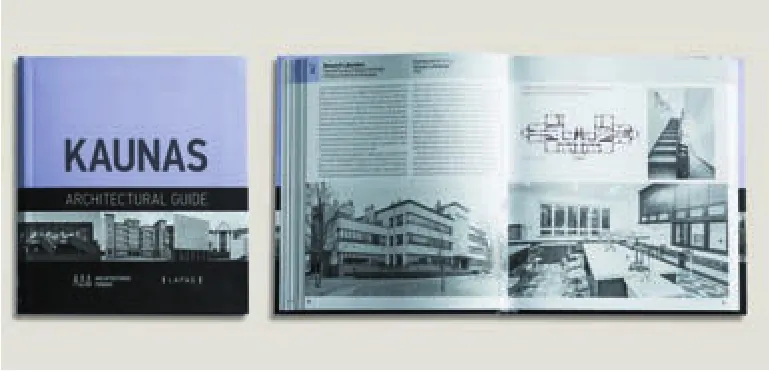
编辑/Editor: Julija Reklaitė
撰文/Texts: Almantas Bružas, Marija Drėmaitė, Giedrė Jankevičiūtė, Jolita Kančienė, Rūta Leitanaitė, Nijolė Lukšionytė, Vaidas Petrulis
摄影/Photos: Norbert Tukaj and others
出版/Publish: LAPAS, www.lapasbooks.lt, 2017

编辑/Editors: Audrius Ambrasas, Dovilė Krikščiūnaitė撰文/Texts: Audrius Ambrasas, Audrys Karalius
摄影/Photos: Audrius Ambrasas and others
出版/Publish: LAPAS, www.lapasbooks.lt, 2014
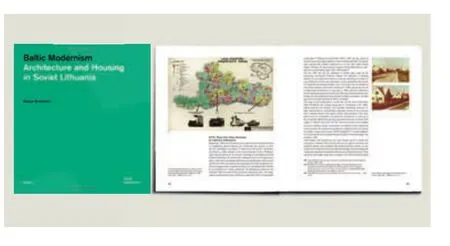
编辑/Editor: JMarija Drėmaitė
出版/Publish: DOM publishers, www.dom-publishers.com,2017
